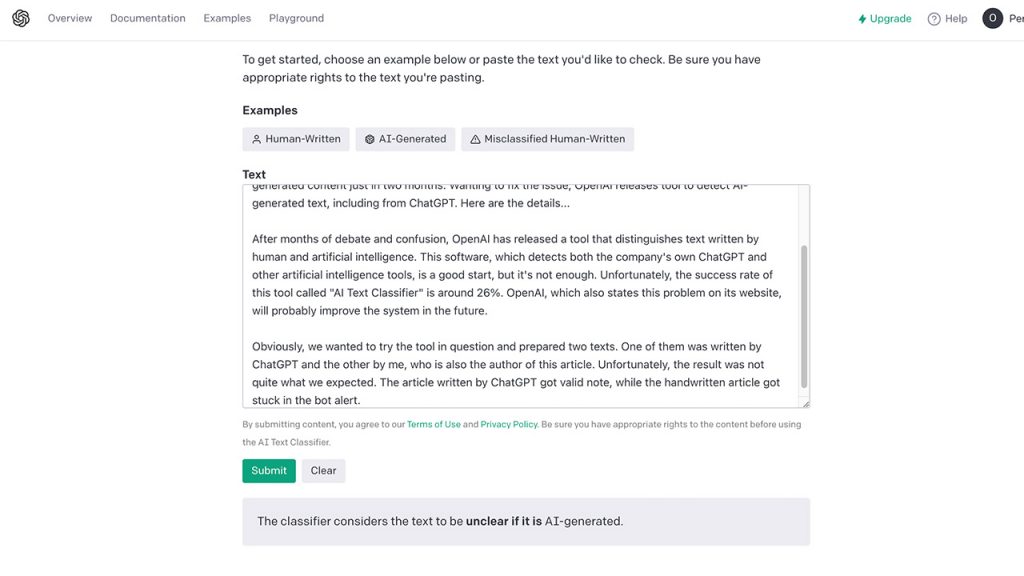ChatGPT is taking the Internet by storm. The Artificial intelligence has not only caught the eye of the business community but also led to the emergence of similar services. We recently shared with you the news that Microsoft has invested $10 billion in OpenAI and that Baidu is working on a competitor AI. But not everyone is as satisfied with ChatGPT as Microsoft is. Unfortunately, the internet was filled with AI-generated content just in two months. Wanting to fix the issue, OpenAI releases tool to detect AI-generated text, including from ChatGPT. Here are the details…
ChatGPT and AI-Generated Content Under the Microscope with OpenAI’s Latest Launch
After months of debate and confusion, OpenAI has released a tool that distinguishes text written by human and artificial intelligence. This software, which detects both the company’s own ChatGPT and other artificial intelligence tools, is a good start, but it’s not enough. Unfortunately, the success rate of this tool called “AI Text Classifier” is around 26%. OpenAI, which also states this problem on its website, will probably improve the system in the future.

Obviously, we wanted to try the tool in question and prepared two texts. One of them was written by ChatGPT and the other by me, who is also the author of this article. Unfortunately, the result was not quite what we expected. Both articles received the warning “The classifier considers the text to be unclear if it is AI-generated”.
Acknowledging the margin of error, OpenAI also warns about the issue. The statement written on the company’s website reads as follows: “Our intended use for the AI Text Classifier is to foster conversation about the distinction between human-written and AI-generated content. The results may help, but should not be the sole piece of evidence, when deciding whether a document was generated with AI. The model is trained on human-written text from a variety of sources, which may not be representative of all kinds of human-written text.”
“AI Text Classifier” also has some limits. Current limitations:
- Requires a minimum of 1,000 characters, which is approximately 150 – 250 words.
- The classifier isn’t always accurate; it can mislabel both AI-generated and human-written text.
- AI-generated text can be edited easily to evade the classifier.
- The classifier is likely to get things wrong on text written by children and on text not in English, because it was primarily trained on English content written by adults.
RELATED:
- Baidu to launch AI Chatbot, Rivaling OpenAI’s ChatGPT
- Is The New ‘Nvidia Eye Contact’ the Next Big Thing or a Creepy Misstep?
- Microsoft Integrates OpenAI AI tools in Workplace Emails and Spreadsheets
- Cheating with AI! One-Fifth of University Assessments Generated by Bots
- Scam Alert: Microsoft’s VALL-E Can Replicate Any Voice In Three Seconds
(via)







